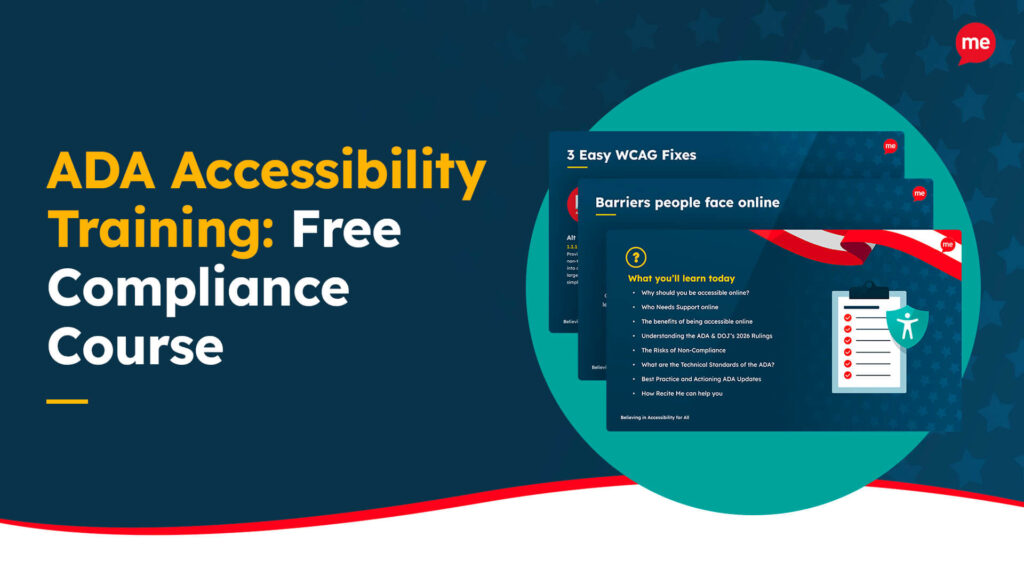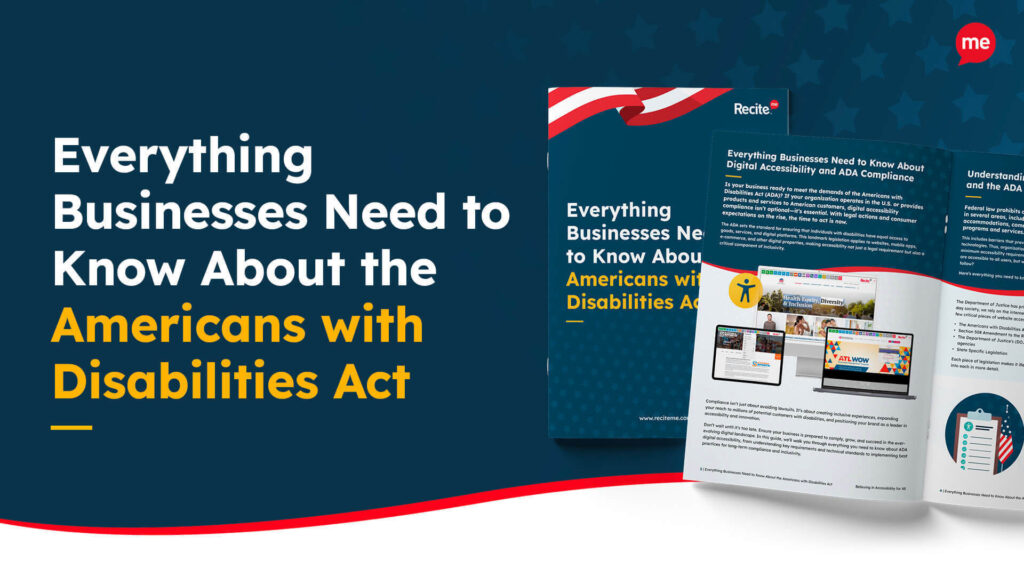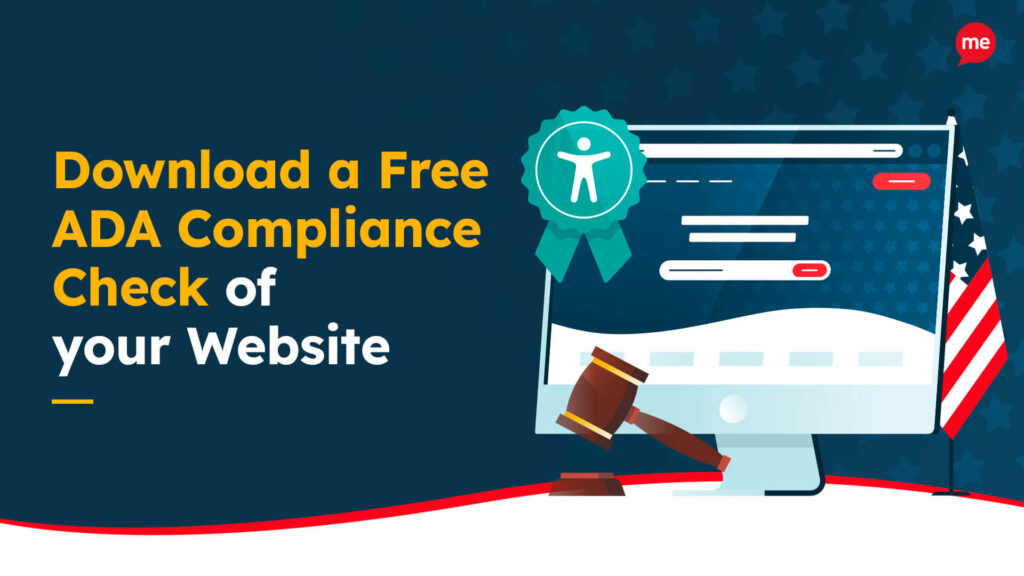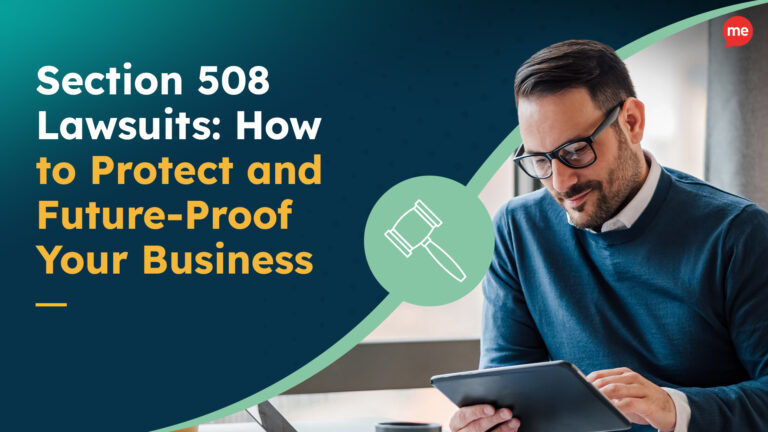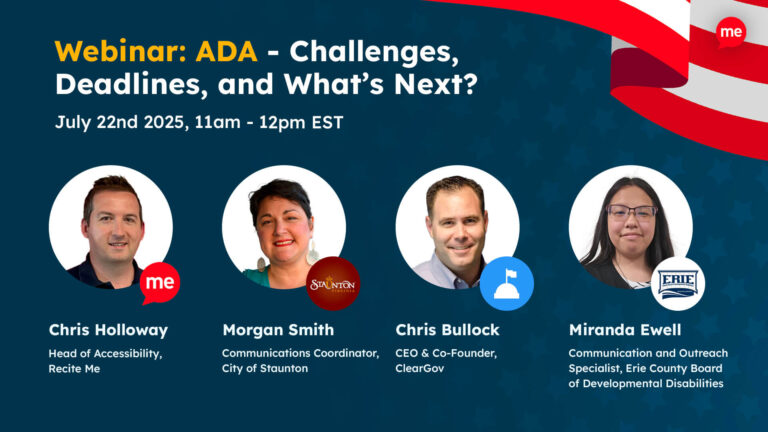Get A Free ADA Compliance Audit Of Your Website
Download NowBy July 1, 2025, state and local government agencies in Colorado must be in full compliance with WCAG 2.1 AA Guidelines.
If your organization will be affected, don’t panic. The Office of Information Technology (OIT) has promised to provide resources, some training on the new state standards, and even a few tools to assist with accessibility. However, agencies and local government bodies will ultimately be responsible for making the necessary changes and improvements to their online content.
That’s where Recite Me can help. Our experienced team is on hand to guide you through the process, and our inclusive accessibility software can help ensure compliance. But first, let’s recap exactly what’s changing and what you’ll need to do.
What are the New Accessibility Laws in Colorado?
In 2021, Colorado announced it would be the first in the nation to implement web accessibility laws for government and local public entity websites. Known as House Bill 21-1110, the legislation has been pushed forward by Democratic Rep. David Ortiz, who is himself a member of the disabled community.
By July 1, 2025, all affected entities must fully comply with WCAG 2.1 AA Guidelines when creating and publishing online content and materials. This includes, but is not limited to:
- Text
- Links
- Images
- Forms
- PDFs
- Documents
- Embedded third-party applications
That leaves organizations just under a month to finalize developing plans and submit any proposed budget requests.
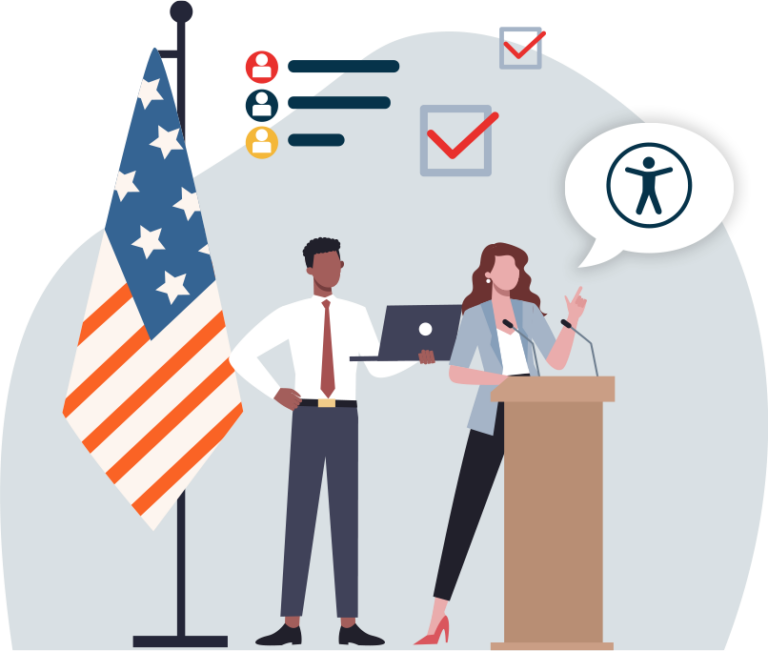
What are the Consequences of Non-Compliance?
Any agency failing to meet the new web accessibility standards could be subject to:
- Injunctive relief (via court order)
- Monetary damages
- Fines of up to $3,500 per plaintiff
With the stakes so high, it’s essential that your organization knows precisely what needs to be done and ensures the correct steps are taken. Otherwise, valuable funding could end up being wasted on costly fines and legal fees. With that in mind, let’s dig a little deeper into WCAG 2.1 AA.
Stay ahead of the game when it comes to Digital Accessibility laws and compliance in the United States. Learn about all the different federal and state-level regulations, see real examples of web accessibility lawsuits in different regions and discover a 7-step action plan for building accessible websites.
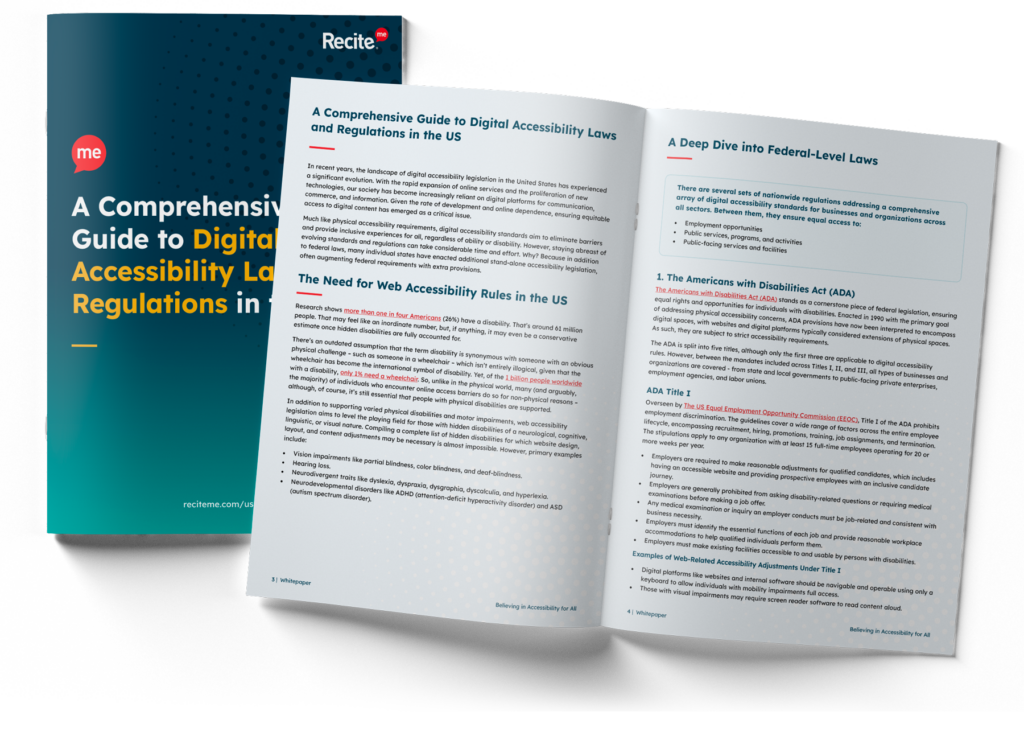
What is WCAG?
WCAG stands for Web Content Accessibility Guidelines. WCAG standards and updates are published by the Worldwide Web Consortium (W3C), which was founded in 1994 with the goal of developing a common set of principles for the benefit of all internet users. Several member organizations and industry leaders contribute to W3C documents, including Tim Berners-Lee, the computer scientist credited with the invention of the world wide web.
WCAG is the gold standard in website accessibility standards. By providing specific, technical, and measurable frameworks supported by in-depth documentation for implementation and remediation, WCAG delivers all of the methodology and techniques website owners need.
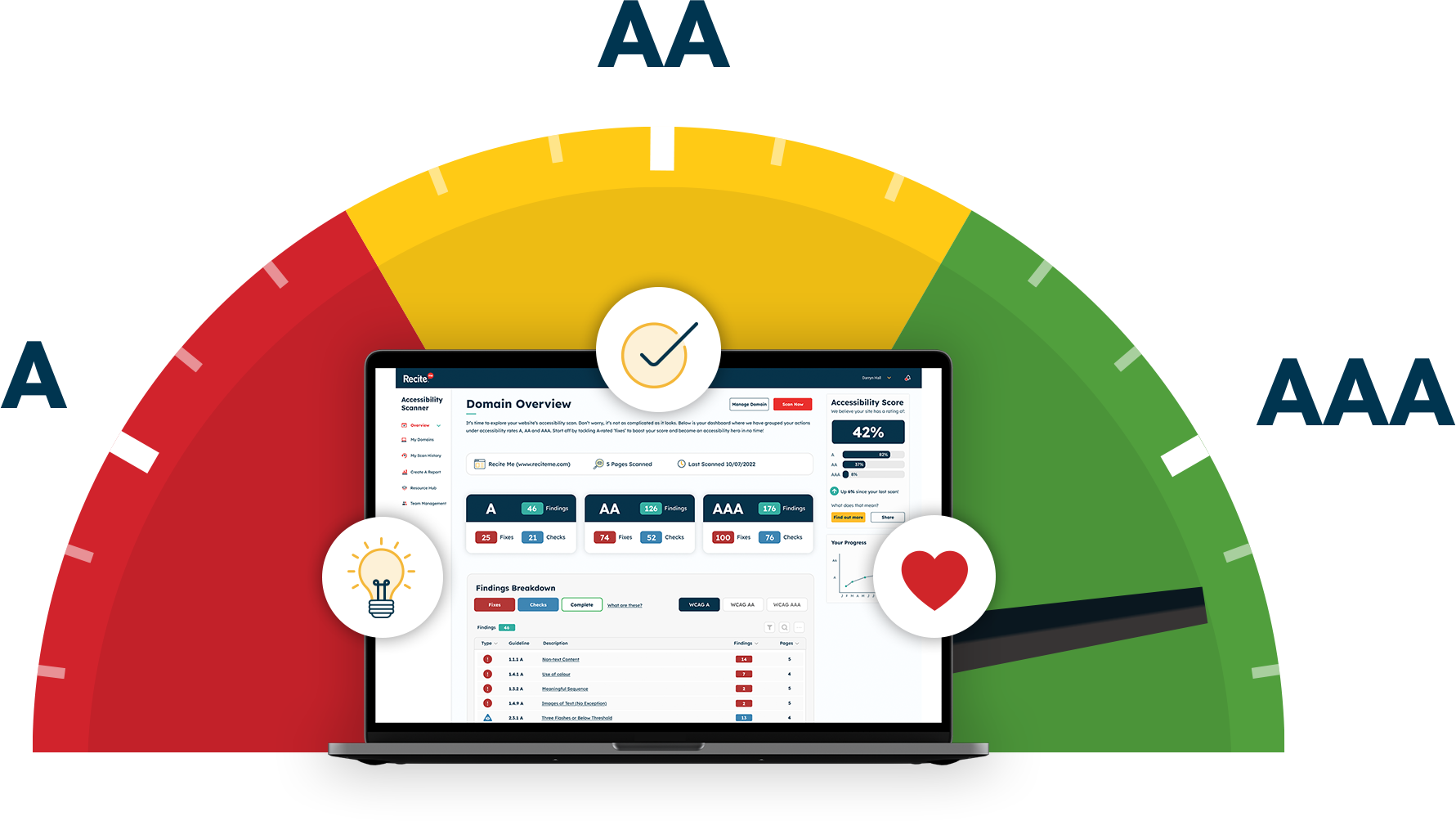
What is WCAG 2.1?
Accessibility standards inevitably change over time, but the current version for web accessibility best practices globally is WCAG 2.1, which comprises 13 specific guidelines, 78 success criteria, and 396 testing techniques, all centered around the four cornerstone principles of making online content suitably:
- Perceivable – Information and user interface components must be presentable to users in ways users can perceive.
- Operable – User interface components and navigation must be operable.
- Understandable – Information and the operation of the user interface must be understandable.
- Robust – Content must be robust enough to be interpreted by various user agents, including assistive technologies.
What is WCAG Level AA?
WCAG provides comprehensive guidance covering three levels of conformance:
- Level A: Things you must do – Basic accessibility considerations that are typically easy to achieve without much impact on website design or structure.
- Level AA: Things you should do – Typically the minimum reference point when discussing ‘making a website accessible’, and the standard that Colorado government and public sector websites must meet under the new legislation.
- Level AAA: Things you could do – The most comprehensive standard of accessibility compliance encompassing every listed success criterion.
How Can Recite Me Help?
Recite Me is an award-winning tech-for-good company specializing in digital accessibility. We recognize that websites are constantly changing as content is updated, edited, and removed – and we understand that for most organizations, that can make trying to meet and maintain WCAG compliance feel like hitting a moving target. So we’ve developed state-of-the-art software to help you.
Accessibility Checker
The Recite Me Accessibility Checker is changing the way companies address WCAG issues on their websites. It allows organizations to identify compliance issues, get guidance on fixing them, track changes and progress over time, and share the results via in-depth reports and accessibility statements:
Step 1: Check Your Domains – Choose between scanning single or multiple pages.
Step 2: Identify Accessibility Issues – Identify the locations of accessibility issues on your website.
Step 3: Fix Accessibility Errors – Boost your accessibility score by prioritizing fixes in line with WCAG Level AA.
Step 4: Track Your Progress – Create and share custom reports with your team and roadmap the next WCAG issues in your fix queue.
The checker audits back-end and front-end web development processes by running 396 separate compliance tests, making it easy to achieve your website accessibility compliance goals.
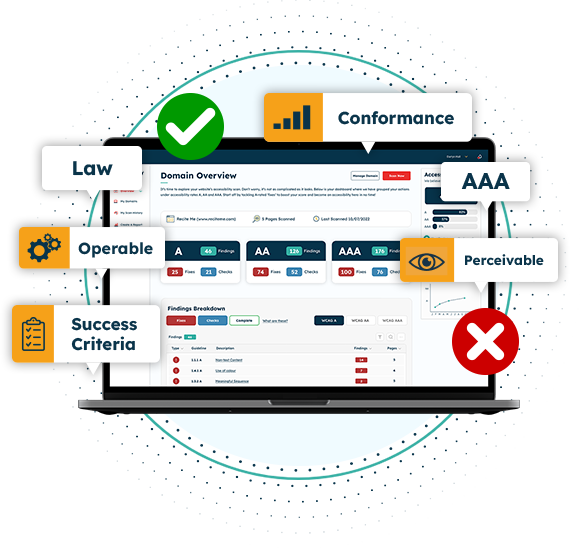
“As new accessibility concerns are identified and standards are updated, clients will be the first to know, meaning their accessibility journey is continually strengthened with every improvement. This includes the anticipated change to WCAG standards, WCAG 3.0, due to come into force within the next two years.”
Ross Linnett, Founder and CEO, Recite Me
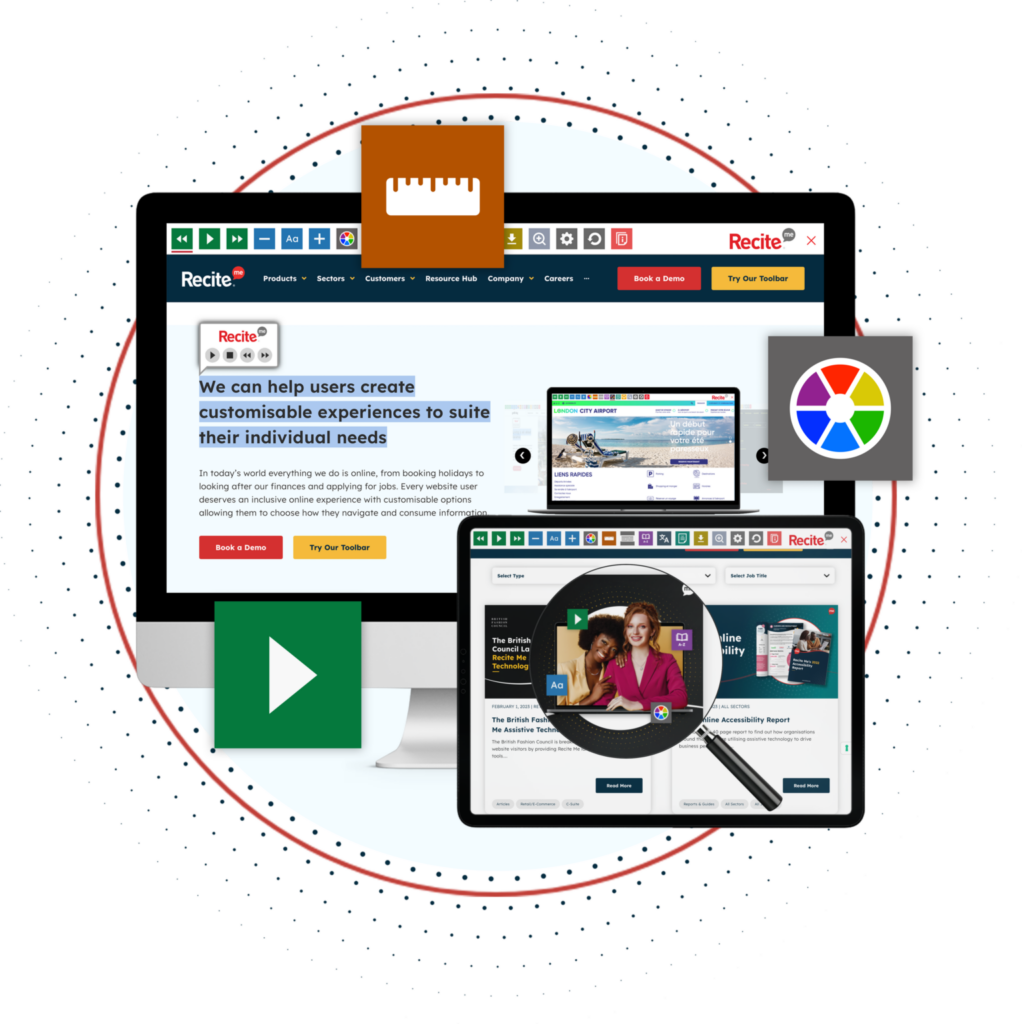
Accessibility Toolbar
While our Checker product is undoubtedly the best for making your website compliant with the latest state and national laws.
We also have the Recite Me accessibility toolbar, which helps create more inclusive websites. This tool helps users with sight loss, cognitive impairments, learning difficulties, physical disabilities, and varying linguistic needs to access your website per their individual needs and preferences. Users can:
- Personalize font size, type, and color options to make each web page easier to read.
- Utilizing the mask screen and ruler tools to make reading easier.
- Download content as an audio file as an alternative to reading.
- Convert page content into over 100 different on-screen languages.
- Have the page read aloud in a choice of 65 different languages.
- Customize PDF documents and have them read aloud or translated.
Need more help becoming ADA compliant?
The following resources are packed full of actionable tips and expert advice for making your digital content compliant with the Americans with Disabilities Act:
Free ADA Accessibility Training
Take the first step to ADA compliance by completing our training course.
Free ADA Accessibility Guide
Ensure your organization is meeting the requirements for ADA compliance.

